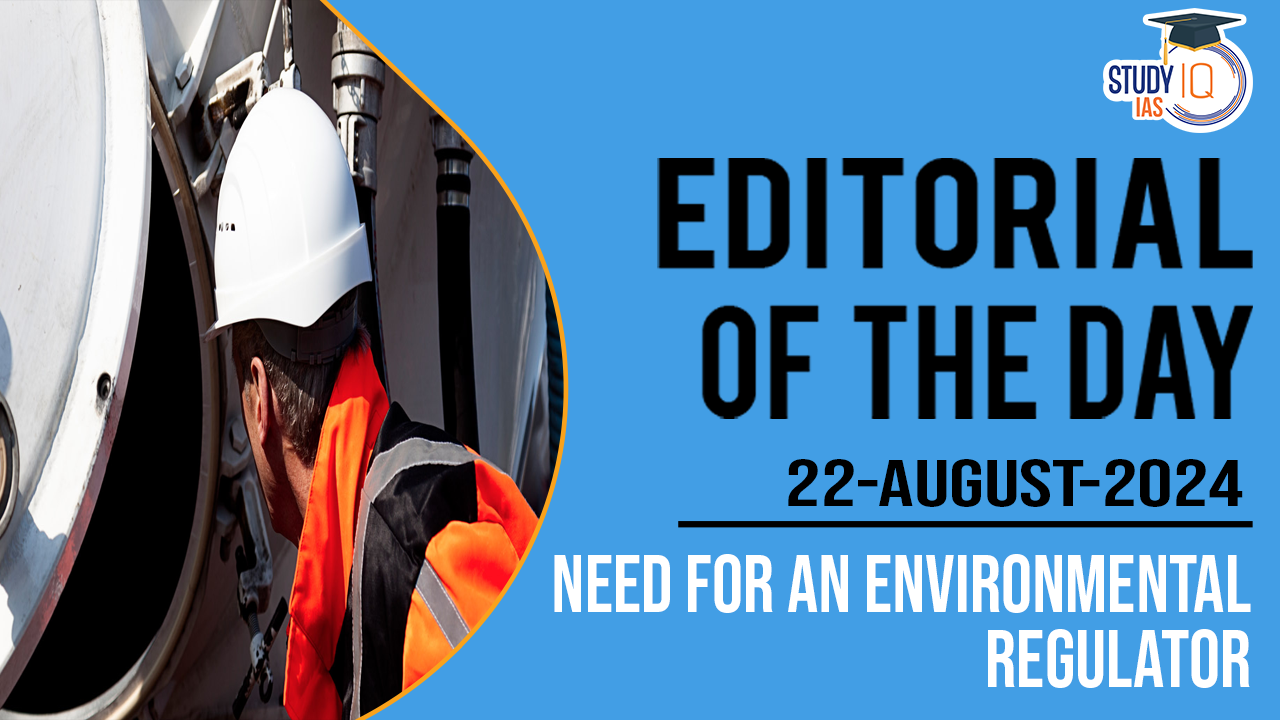Table of Contents
Context: The Supreme Court decided to examine the need for a ‘permanent environmental regulator’ similar to those found in the telecom and electricity sectors.
Arguments in Favour of Establishing a Permanent Environmental Regulator
- Unified Oversight and Coordination: A permanent environmental regulator could bring together the various fragmented regulatory bodies currently operating in silos.
- This would ensure a more cohesive and coordinated approach to environmental and climate regulation, reducing overlaps and inconsistencies.
- Enhanced Accountability and Enforcement: A single regulatory authority would have the mandate to enforce environmental laws uniformly across the country.
- This could lead to stronger compliance and more effective deterrence against violations, as there would be clear accountability.
- Specialized Focus on Environmental Issues: Just as the telecom and electricity sectors have specialised regulators, the environment, being a critical area, warrants its own dedicated regulator.
- This would ensure that environmental concerns receive the focused attention and expertise they require.
- Proactive Environmental Protection: A permanent regulator could adopt a proactive stance, implementing preventive measures and long-term strategies for environmental protection, rather than merely reacting to violations or disasters.
- Streamlined Decision-Making: With a single authority overseeing environmental regulations, decision-making could be streamlined, leading to faster responses and reduced bureaucratic delays in addressing environmental issues.
- Better Integration of Climate Change Policies: The regulator could integrate climate change policies with environmental regulations, ensuring a comprehensive approach to both mitigation and adaptation strategies in the face of global climate challenges.
Arguments Against Establishing a Permanent Environmental Regulator
- Duplication of Existing Frameworks: Critics argue that establishing another regulatory body could lead to unnecessary duplication of efforts.
- The current system already has specific regulators and institutions like the National Green Tribunal and the Central Empowered Committee that handle environmental issues.
- Increased Bureaucratic Complexity: Adding another layer of regulation could complicate the existing regulatory framework, making it more cumbersome and less efficient.
- This could lead to delays in decision-making and implementation.
- Risk of Overcentralization: A single, centralised regulator might lack the nuanced understanding required to address the diverse environmental challenges across different regions of India.
- Local and sector-specific regulators might be better equipped to handle specific issues.
- Potential for Reduced Expertise: Existing regulators are staffed with experts in their respective fields, such as wildlife conservation or pollution control.
- A single regulator might dilute this specialised expertise, leading to less effective regulation.
- Financial and Administrative Burden: Establishing and maintaining a new regulatory body would require significant financial and administrative resources, which could be better utilised by strengthening and improving the efficiency of existing regulators.
- Possible Resistance from States: Environmental issues often have regional and local dimensions.
- A central regulator might face resistance from state governments, who may view it as an encroachment on their jurisdiction and authority over local environmental matters.


 National Technology Readiness Assessment...
National Technology Readiness Assessment...
 Justice Mission-2025: China’s Live-Fir...
Justice Mission-2025: China’s Live-Fir...
 Suryastra: First Made-in-India Long-Rang...
Suryastra: First Made-in-India Long-Rang...

























